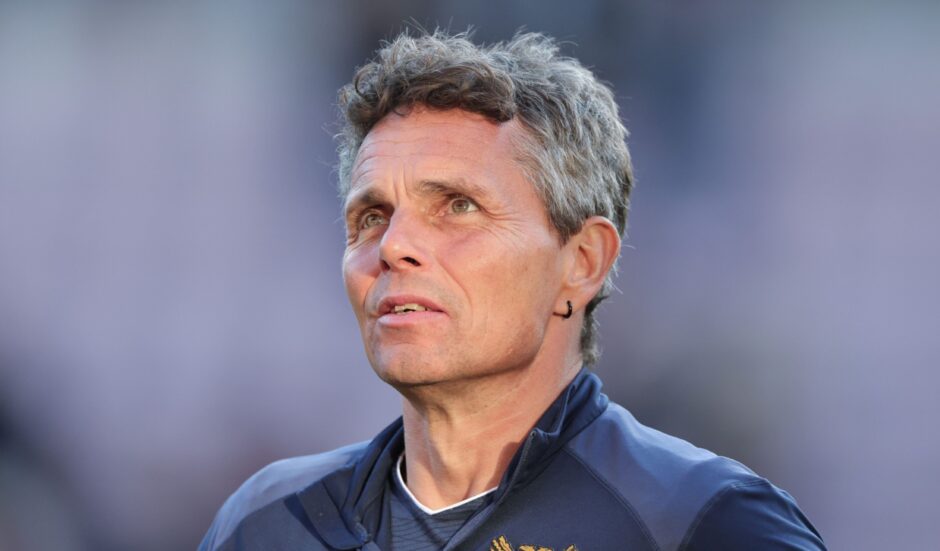
It ended as a team bearing no resemblance to the great ones that carried St Johnstone’s name at the top of Scottish football for a generation was sat inside the away dressing room at Tynecastle.
That is when word reached them that a Ross County penalty at Dens Park had finally brought the guillotine down.
A team that for the large part, tried its best to salvage a bit of pride for the supporters, their city and county, that it represented but was woefully inadequate in too many aspects.
The 16-year period in the top division is over.
There needs to be recognition of just how good the good times have been.
No other club has achieved pound for pound as consistently and to such magnificent reward as this one.
And there needs to be acceptance that, when the likes of Hearts, Hibs, Dundee United, Dundee and even Rangers, have fallen out of the league, there is no shame.
It’s sporting gravity.
But even though there’s a “what goes up must come down” backdrop, that shouldn’t be mistaken for a crushing under the weight of inevitability.
The downfall has been larger parts historic than recent.
This is the inside story of the end of a glittering and glorious era that was plenty of years, and plenty of errors, in the making.
Chickens coming home to roost
You get the odd sudden implosion of a football club which begins and ends with what happened on the pitch and in the dugout, where those tasked with upstairs stewardship can point to all the critical mistakes being made by players and coaches.
St Johnstone’s demise hasn’t been one of them.
It can be legitimately argued that getting big and little things wrong in the offices of McDiarmid Park need not have ended with relegation from the Premiership, but the early chapters of this story were leadership and planning shortcomings.
This is the most incongruous part of the whole thing.
For years, St Johnstone were held up as a shining example of how a club should be run.
No wonder.
In the golden age, they redefined the phrase “punching above their weight” and had three trophies and six European campaigns to show for it.
There’s an argument to say that Geoff Brown has been the best owner or chief administrator of a Scottish football club the modern-day, professional game has ever known.
He’s certainly the most influential figure in St Johnstone’s history.
It didn’t look complicated, but plenty tried and failed to replicate the McDiarmid alchemy.
Brown knew when to be pragmatic, steadfast and risk-averse, when to be ambitious, bold and risk-inclined.
Most of all, he had an eye for good people who would be worthy of his delegation and empowerment.
And he had a nose for a charlatan and a bluffer.
Stepping down as chairman in 2011 and handing over to his son wasn’t a gamble.
Steve had the energy, time and desire to pick up the baton.
Once he had made his first managerial appointment, hiring Tommy Wright to replace Steve Lomas, the dynamic at the top of the club was as effective as anything in the Geoff Brown era.
That history-making chairman/manager partnership lasted seven years but this relegation tale had its origins after two of those.
Failure to modernise
From the moment Wright first identified that Saints needed to modernise their recruitment operation, in 2016, and his suggestion wasn’t taken on board, the most glorious of honeymoons, which included a first ever Scottish Cup, was over.
That shouldn’t be misinterpreted as the breaking down of a relationship.
There were long spells when the two men ham-and-egged as productively as ever.
And on the odd occasion there was anything approaching pressure, Wright couldn’t have wished for a more supportive boss.
But, in the context of a club that ploughed on with its head down along a fateful route, the big battle was lost.
Saints continued to rely on a manager’s contacts book rather than fixing the recruitment roof while the sun was shining.
Yes, there was the curious year (actually, not even that) of Stevie Grieve being appointed as a recruitment head. He was either not backed or listened to, or wasn’t the right person for the job in the first place.
But if things don’t work out with a head coach, you don’t abandon the concept of employing another one.
You make sure the next man is better, or the environment to make him better is improved.
Reverting to the old ways, without one recruitment-dedicated employee on the payroll, was utter folly.
Had St Johnstone been a planning club before, during or after the infamous Kerr-McCann summer 2021 transfer window, there’s every chance they would still be a mid-table Scottish Premiership club – able to take advantage of one or more of the big clubs having an off season, like Dundee United this year, or at worst, flirting with the basement zone without their top-flight status being seriously jeopardised, like Motherwell.
Somewhere in between, they should basically be St Mirren.
Geoff Brown’s return
Geoff Brown wouldn’t have felt the need to return to a more hands-on role had his son’s passion for running St Johnstone still burned brightly.
And, ironically after a few transfer windows of uncharacteristically generous spending before he and Stan Harris got their eyes on the books, belts were tightened to not only stop the bleeding of a seven-figure financial loss but to prepare the ground for a sale.
That around half-a-million pounds was squandered by making paperwork errors when signing a couple of youth prospects who would never play for the first team, and then had to be clawed back by Harris, was emblematic of an end-of-days administrative regime and of some astonishingly incompetent middle-management.
A book could be written on people St Johnstone fans would barely recognise in the street who have had such a consequential effect on its health.
Galling doesn’t do it justice.
Steven MacLean could best speak to the football toll of that cost-cutting but for all that it undeniably impacted the team that went on the park, Saints were a financially profitable, Premiership club when they became foreign-owned for the first time in their history last summer.
The timing of Adam Webb and his consortium completing their buyout was unfortunate.
Geoff Brown had agreed the broad terms by the spring and confirmed as much in public on May 1.
That the cutting of bureaucratic red tape took over two months from there, and Webb wasn’t officially allowed to get to work until July 8, proved to be a significant delay.
Webb’s strategy of evolution not revolution had merit.
It was Geoff’s decision to make Craig Levein the last manager of the Brown era and Geoff’s decision to keep him in post for the takeover.
But, despite the fact Webb backed Levein publicly, he was given conflicting advice from trusted voices on whether to keep or sack the former Scotland boss.
You do wonder if the Atlanta litigator would have opted for the latter had he been given the keys to McDiarmid at the beginning of June rather than the beginning of July.
It was only natural that the up and down nature of results before the transfer window shut would leave Webb conflicted about whether to stick or twist.
Adam Webb’s dilemma
Levein was the most knowledgeable and experienced football voice in the building, and he had just kept St Johnstone in the Premiership.
But you got the impression that Webb, who had topped up the transfer kitty when he took over, found himself in a bit of recruitment no man’s land in the last week of the window – not ready to sack his manager but not imbued with sufficient faith to back him.
The result was Saints made the lowest or second lowest spend in the league, depending who you speak to.
And when you looked at the imbalanced squad that was built on it (Levein had probably made a calculated gamble that, being desperate not to fail in his first year at the wheel, the rookie owners would throw money his way in the last few days of August) it showed.
Webb, by this point facing up to a personal health battle, was decisive when it came to sacking Levein and the interview process to replace him was thorough and, looking at the shortlist, resulted in the most qualified of the contenders getting the job.
Simo Valakari hasn’t been able to keep Saints up but his and the owners’ first transfer window had method in testing circumstances.
It was probably the best they could do.
Around £500,000 was accrued through player sales and, subsequently, the same again on the back of a Scottish Cup run to the semi-finals.
Combined with a healthy end of financial year balance sheet, some big earners about to come off the wage bill and those staying subject to wage cuts between 30% and 50%, St Johnstone will go into the Championship with monetary muscle the vast majority of their peers won’t be able to match.
In a planning and recruitment sense, crucially, they will also have a head start on whoever loses the play-off final.
There’s a lot going in their favour, but in-built advantages will be fleeting in the mission to avoid a long lower league slog.
Having the right people in leadership roles and applying ambition to properly review, refresh and rearm will instantly be under the microscope.
This is Saints in America’s biggest opportunity to give the new era lift-off – and its biggest test.
A squad unfit for purpose
Opinion will be divided as to the wisdom of employing Levein as MacLean’s successor and whether Saints stayed up in 2024 because of, or despite him.
It matters not.
With Webb a floating voter for the first few weeks of his ownership, Levein was the man tasked with a squad overhaul.
A budget nudging £2 million for base wages was still a bottom-two one in terms of the Premiership pecking order, but it was bigger pot of money than MacLean got the summer before, taking into account Webb’s top-up, understood to be around £250,000.
Fundamental recruitment mistakes were made and an opportunity squandered.
It was right that Andy Considine retired but the only reason for allowing Liam Gordon and Ryan McGowan to leave – the latter still thought he was getting a (reduced pay) deal when he returned from his summer family holiday – was if they were going to be replaced by better players.
They weren’t.
Jack Sanders, Kyle Cameron, Aaron Essel and Lewis Neilson – not a Premiership-ready centre-back among them.
Sam McClelland had potential, but he too lacked experience at this level.
And when Steven Caulker ends up being taken on trial, you know something has gone awry.
Then we come to the goalkeeper situation.
Levein had seen Josh Rae make mistakes that cost his team goals in two League Cup group matches and in a fateful Premiership match at Tannadice.
He publicly admitted that his mind wasn’t made up on the position and whether he needed a senior pro between the posts.
Rae was taken out of the firing line and Ross Sinclair given a chance (looking understandably rusty) well before the transfer window shut.
Yet the decision was still made to persevere with a strategy of two young goalies competing for a first team place.
Oh, and for over a month, there was nobody to coach them.
It was a state of affairs as unfathomable and unacceptable at the time as it is now on reflection.
Big risks
Goalkeeper, centre-half and full-back – gambles at every turn, to varying degrees of recklessness.
The midfield had more experience once Jason Holt was picked up as a free agent. There were several players Levein could pick who were tidy on the ball. But it still lacked physicality and athleticism.
It was only up front that the squad looked close to being fit for purpose.
Adama Sidibeh (once he and those close to him had got their heads around the fact he wasn’t going to be sold) and Benji Kimpioka brought pace to the team and both had playing styles that would complement the big summer arrival, Uche Ikpeazu, who was due to be available in late summer or early autumn.
When Makenzie Kirk was signed, if anything, that department appeared over-stocked.
Even with Ikpeazu out, goalscoring wasn’t a problem, as a 3-0 victory at Kilmarnock showed.
The end of Levein’s reign arrived after two palatable losses (Rangers in the cup and United in the league) and two unpalatable losses (Motherwell at home and then, after an international break, Hibs away), which were characterised by a dearth of attacking purpose and strategy, and a diminution of evidence that the manager could see a way to change that.
Anybody who reflects on the first five Premiership matches of the season and comes to the conclusion: “They were 10th when Levein was sacked” or: “At least they were hard to beat” is misrepresenting the situation.
The one victory in five had been earned against 10 men and the two teams below them at the point of the sacking (Kilmarnock and Hearts) were playing European football and couldn’t be considered genuine relegation candidates.
Saints were effectively bottom, were the worst team in the league and were the least prepared for a long season.
Don’t let anybody tell you different.
Levein’s successor wasn’t bequeathed an inheritance. He was picking up a big tab that would need paying.
Hope evaporates
St Johnstone were a team and club lacking identity and energy for too long, but it was only after Levein had been replaced by Valakari that you truly grasped how profound that void had become.
The injection of positivity and purpose (not to mention a capacity for work and an ability to manage up and down) from the moment the Finn walked through the doors at the stadium was instant.
In terms of a transformative character, this hadn’t happened at St Johnstone since Owen Coyle.
With his earrings, tattoos and a look more T in the Park than McDiarmid Park, Valakari oozed charisma and vibrancy.
But there was football substance behind the man who preached “full rock and roll”.
He had a coaching pedigree, which only the narrow-minded would fail to recognise.
And there was a bounce.
Valakari wasn’t allowed in the dugout when Saints blitzed Ross County in the autumn Perth sun, but he had been getting his messages across nonetheless.
The compare and contrast between that performance and the shambolic display against the same opponents in Dingwall less than a month earlier was glaring.
That was the first win, and the second couldn’t have been better scripted to forge a bond between manager and supporters – a last-gasp victory in front of the away end at Dens Park.
The fact that it was his celebration that broke the news that Nicky Clark’s winning goal would stand – after the referee had spoken to he and Tony Docherty to explain the reasons it had taken so long for the VAR officials to come to that conclusion – was a perfect metaphor.
The Saints fans were eating out of the palm of Valakari’s hand already.
He had (correctly) identified that the biggest strength of this group of players was it could pop the ball around midfield.
They showcased that to such good effect at Dens when Dundee were out-played and, arguably even more impressively, for half an hour in Paisley four days later.
The 60 minutes that followed though, captured the depth of the problem.
Saints ended up being over-powered. They crumbled.
The Kimpioka problem
There was another issue that emerged that night, which would end up proving to be transformative in a detrimental way.
After scoring one goal and seeing a second disallowed, star striker, Kimpioka, who was flirting with being the Premiership’s top scorer showed his other face – the indulgent, selfish one that undermined the team effort, saw him being substituted and prompted a public debrief from Valakari of why running down cul-de-sacs might not be a good idea when there are team-mates to pass to.
Kimpioka would only go on to score one more goal and didn’t contribute to a further point earned by the team.
A week into December, though, Saints still looked in a decent place.
Beating Kilmarnock and drawing with Aberdeen at Pittodrie had averted a significant post-honeymoon drop-off.
And cavalry would be coming over the hill in the soon to open transfer window.
The spadework had been done for four or five signings to add to the two free agents Valakari had already picked up, Bozo Mikulic and Barry Douglas.
Four weeks of football hell, however, obliterated those plans and became the mini-season that defined the whole one.
Everything that could go wrong, did go wrong.
Losing a game doesn’t come more painful than the manner in which Saints let a 2-1 lead become a 3-2 defeat at home to St Mirren.
Valakari’s lack of faith in his bench players was laid bare when he (wrongly) chose not to introduce any second half substitutes.
The following week, he over-estimated the team’s capacity to operate in a system other than the midfield diamond that they had initially found comfort in, with Hearts running over the top of a 4-4-2 Saints in the early stages at Tynecastle.
Dundee United exposed a weak right flank in a comeback win at McDiarmid Park.
The 4-0 defeat at Celtic Park was par for the course and 10-man Saints showed some tenacity to earn a point against a Hibs team which was building momentum by this stage of the campaign.
But when Dundee came to Perth on January 5, rock bottom was reached. At the worst time. In the worst fixture.
Plans ripped up
Valakari’s biggest error was thinking he could get through to January before signing a goalkeeper. Ross County picking up Jordan Amissah showed it wasn’t a barren recruitment wasteland for that position.
Dundee’s opener exposed the fact that the defence had lost faith in Rae, who was only still in the team because Sinclair was injured. Drey Wright wouldn’t have attempted a clearance out of his goalkeeper’s hands otherwise.
After the game, the C word was used for the first time by Valakari (showing signs that he, like many of his players, had been battling illness over the festive period) and some fans congregated at McDiarmid Park’s front door seeking answers.
3-0 down in a local derby after 22 minutes was indeed “catastrophic”.
An eight-point gap between themselves and second bottom was bad but wouldn’t have been so impactive had it happened a month earlier in the season – or even later.
With the window having just opened, a number of targets Valakari had lined up were spooked, which forced him to look further down the list.
And it also created a necessity to strengthen positions (chiefly midfield) that a few weeks earlier weren’t a cause for panic.
The four or five players of quality included an experienced goalkeeper who had been a regular in a top European league and a number 10/centre-forward who ended up moving to Turkey. Both – and others – got cold feet as the slump gathered pace.
Sights were lowered and, with the midfield strength of his squad turning into a weakness, more positions needed attention than had been anticipated.
The jam had to be spread thinner. It was a significant pivot.
The club did as well as they could in the circumstances. It felt that way at the time and relegation hindsight shouldn’t change that.
It’s hard to do justice to the difficulty of the recruitment task in January given their predicament.
It’s also hard to do justice to the disappointment Valakari felt when the SFA prevented him from bringing Roman Eremenko to Perth, a player he believed would elevate the performance levels of those around him through his off-pitch professionalism and on-pitch grasp of football fundamentals.
The owners couldn’t be accused of running up a white flag and squirreling away money.
From the moment Andy Fisher arrived on loan, it felt as if they got the balance between patience and urgency just about right. There was a plan, albeit a redrafted one, and it wasn’t a stretch to understand the logic of who was recruited.
For a second time in the season, there was a bounce.
Four wins in a row (two in the Scottish Cup) represented momentum and, even though bad habits resurfaced in defeats to Kilmarnock and Hearts, a record of seven wins and two draws in 12 games, culminating in a victory over champions-elect, Celtic, was impressive stuff.
And there were seven clean sheets.
It isn’t pro-Valakari PR to point to the loss of half of the back four which kept Celtic at bay as the biggest reason that win proved to be the season’s highpoint rather than a launching pad.
Bozo Mikulic’s training ground ACL injury in February left Saints walking a tightrope that was frayed.
When Zach Mitchell clutched his hamstring at Tannadice, that tightrope snapped.
Sam Curtis’ loss of form can no doubt be partly attributed to Mitchell’s absence, while the Barry Douglas pendulum, which had swung between useful senior pro with more to give and man playing a season too far and ready for retirement, settled on the latter.
And, as the post-split defeats piled up, we can also say that the midfield upgrade didn’t prove to be telling.
In fact, until a leaner, fitter Elliot Watt re-emerged from the gym to claim a starting place and show a bit of quality, it didn’t prove to be an upgrade full-stop.
If they stay, Jonathan Svedberg and Victor Griffith will need to kick-on after getting a pre-season under their belts, but in terms of the second half of this season, the best individual performances by central midfielders in 2025 before the late Watt cameo were from players already at the club, Sven Sprangler and Jason Holt.
Too big an ask
Saints were just about in touching distance for the post-split fixtures but bridging a five-point gap had never been done before and this wasn’t a group capable of making Premiership history.
Other than the last half-hour against Kilmarnock, when it was all too meek and acquiescent, they tried their best.
But Ross County, an equally poor side, had too plump a cushion.
Dundee, an even worse side at defending their box, had Simon Murray.
Saints didn’t have a reliable player in their backline, bar Daniels Balodis, and the attacking threat was weaker than it had been all season.
As any conscientious manager would do at the end of a season, Valakari will reflect on team selections, substitutions, tactical changes made and tactical changes not made.
Other than that fateful St Mirren game, when he decided against swapping tired legs for fresh ones, I don’t think there is a member of the squad he inherited or the one he adapted in a notoriously problematic window who could claim: “I would have got us out of this if I’d been given more of a go.”
If Kimpioka hadn’t let his selfish streak run free and then scuppered a transfer to Belgium that would have freed up money for a team-playing, get them up the pitch centre-forward that could have been the difference.
If Celtic hadn’t stalled on allowing Adam Montgomery to return to McDiarmid Park that could have been the difference.
But every relegated team has “ifs and buts” like this, and plenty more besides.
When you sum it all up, you don’t stay up with 12 starting centre-backs over the course of a league campaign and four captains.
Valakari deserves the opportunity to work from the blank canvas he now has, to create a squad and team in his image. A club.
If, as I suspect will be the case, aggression and athleticism is added to the centre of the park (it has to be), width and pace become ingrained, defenders who can defend and leaders who can lead become the norm rather than the exception, all the benefits of continuity and rude financial health for a team going down will be reaped.
This relegation has been a long time coming.
Some of those who share in the responsibility are long gone.
But St Johnstone have owners who must show they have planned for the end of this golden 16-year era and must show they have the aspiration, vision and capability to put the foundations down for another generation’s worth of success.
They have a head coach who has the force of personality to make a promotion campaign a thrilling ride for the supporters and has shown he can coach a team to beat the best in the country. He must show he’s got a firm grasp on what works best in the grind of a Scottish football league season.
Those envious of the trophy lifts, the top six finishes, the European campaigns and the permanence of this football club not from a “football city” will revel in its demise.
Let that envy rise quickly and steeply on the back of a swift and emphatic return to the league St Johnstone have graced for nearly two decades.
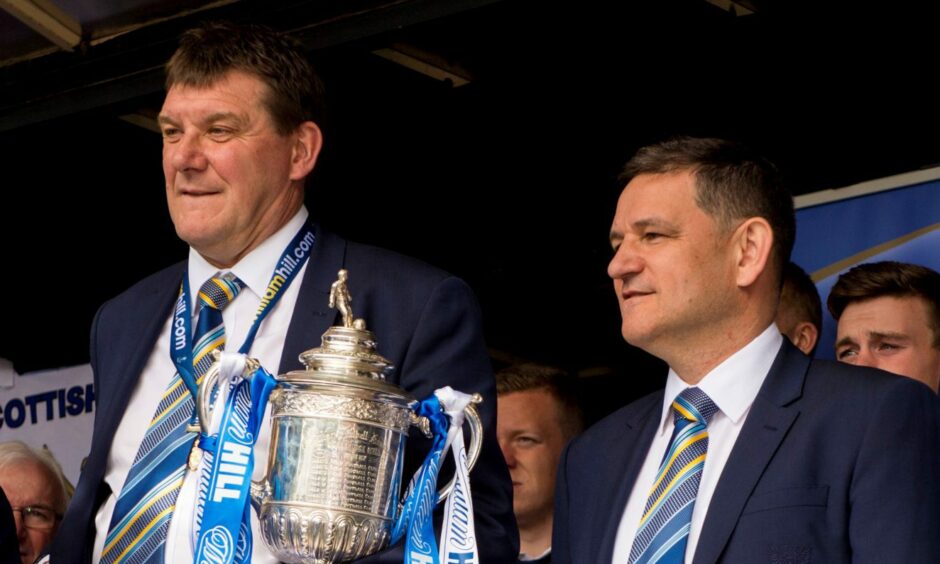
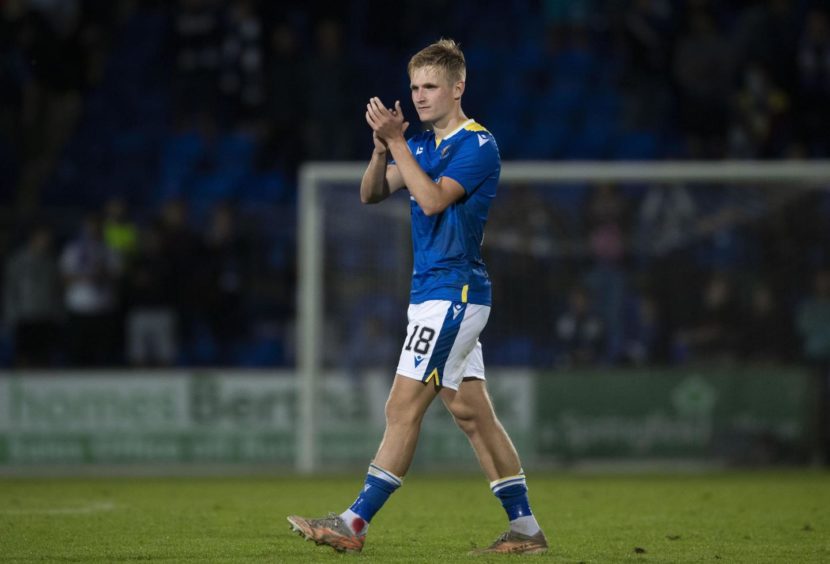
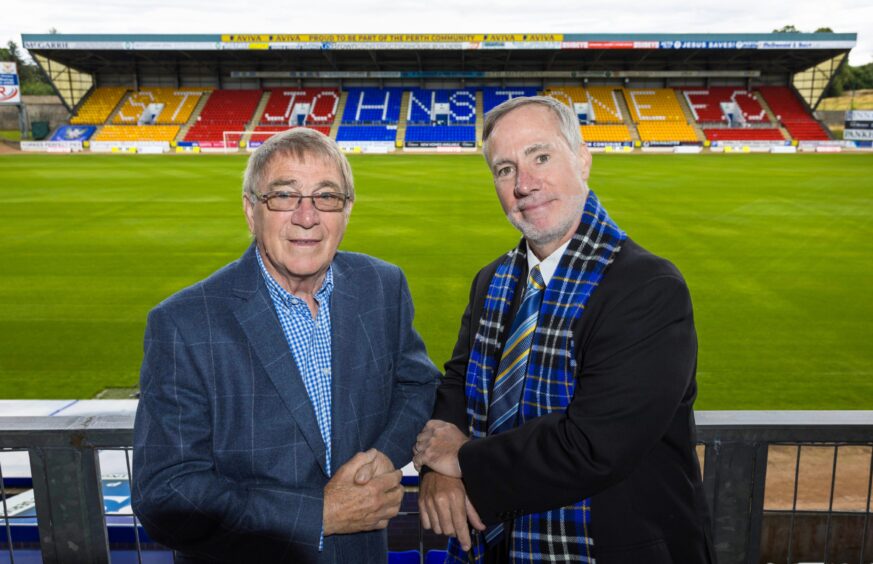
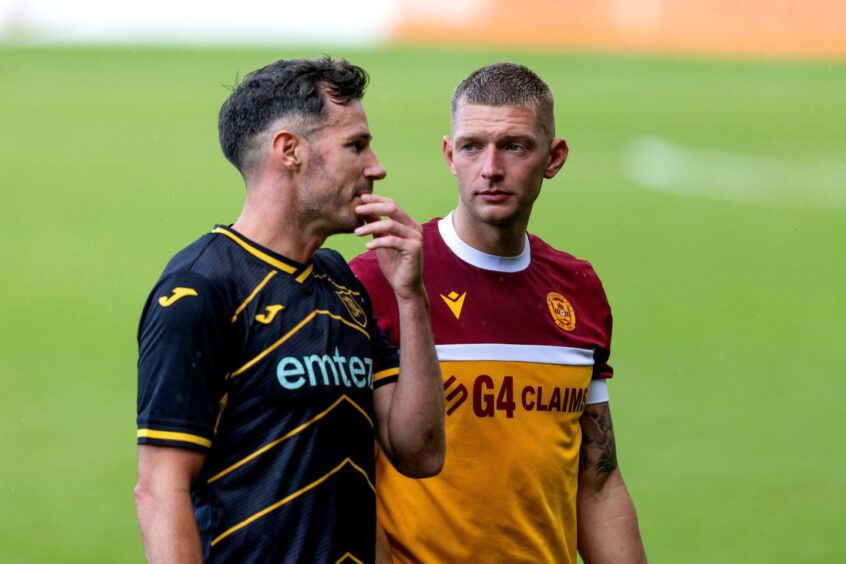
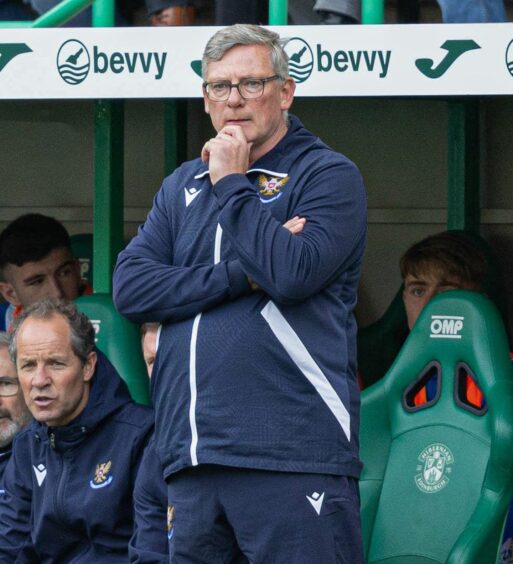
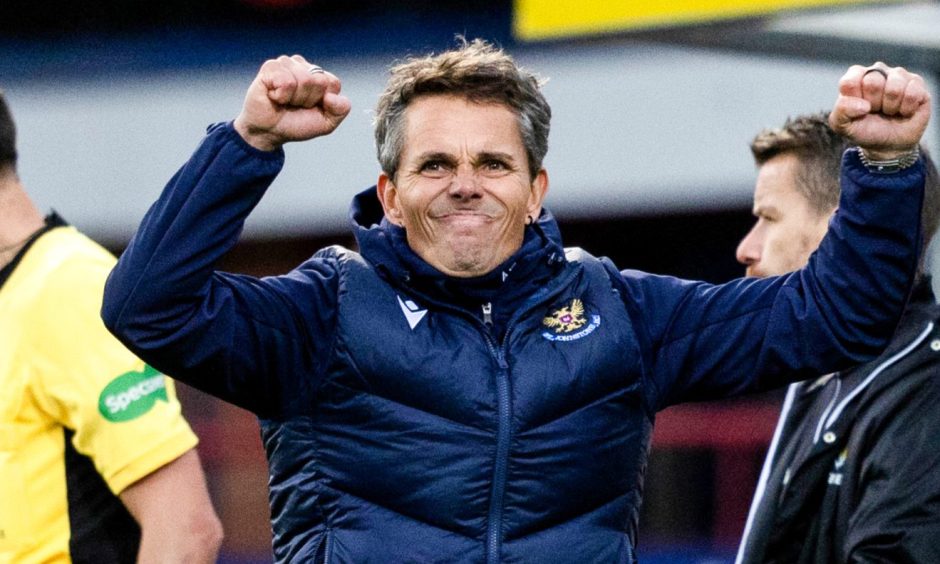
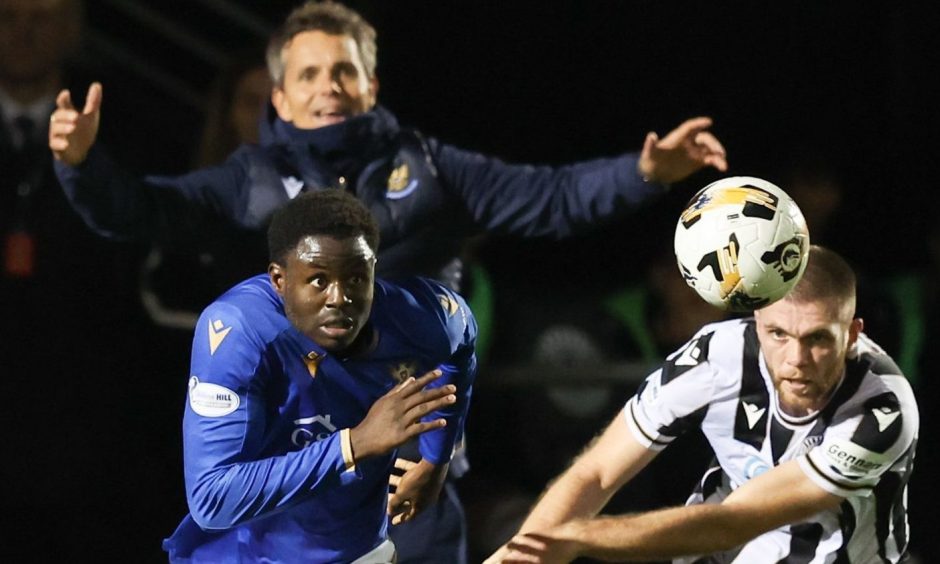
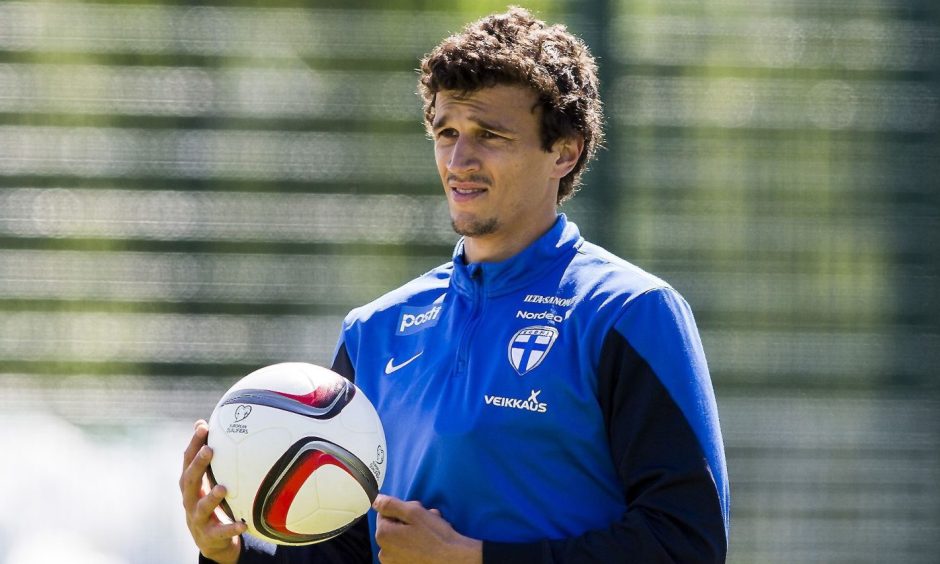
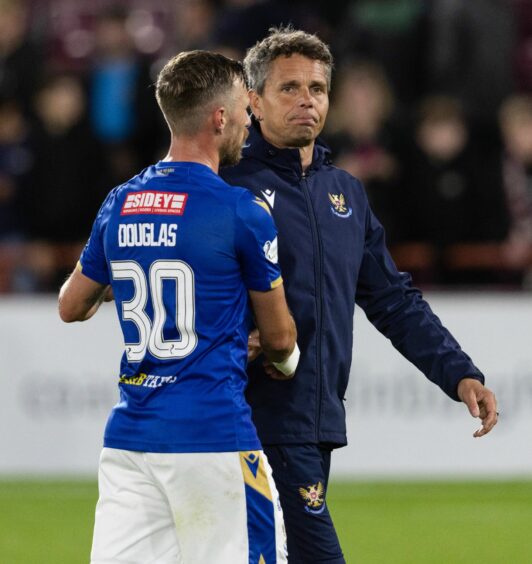
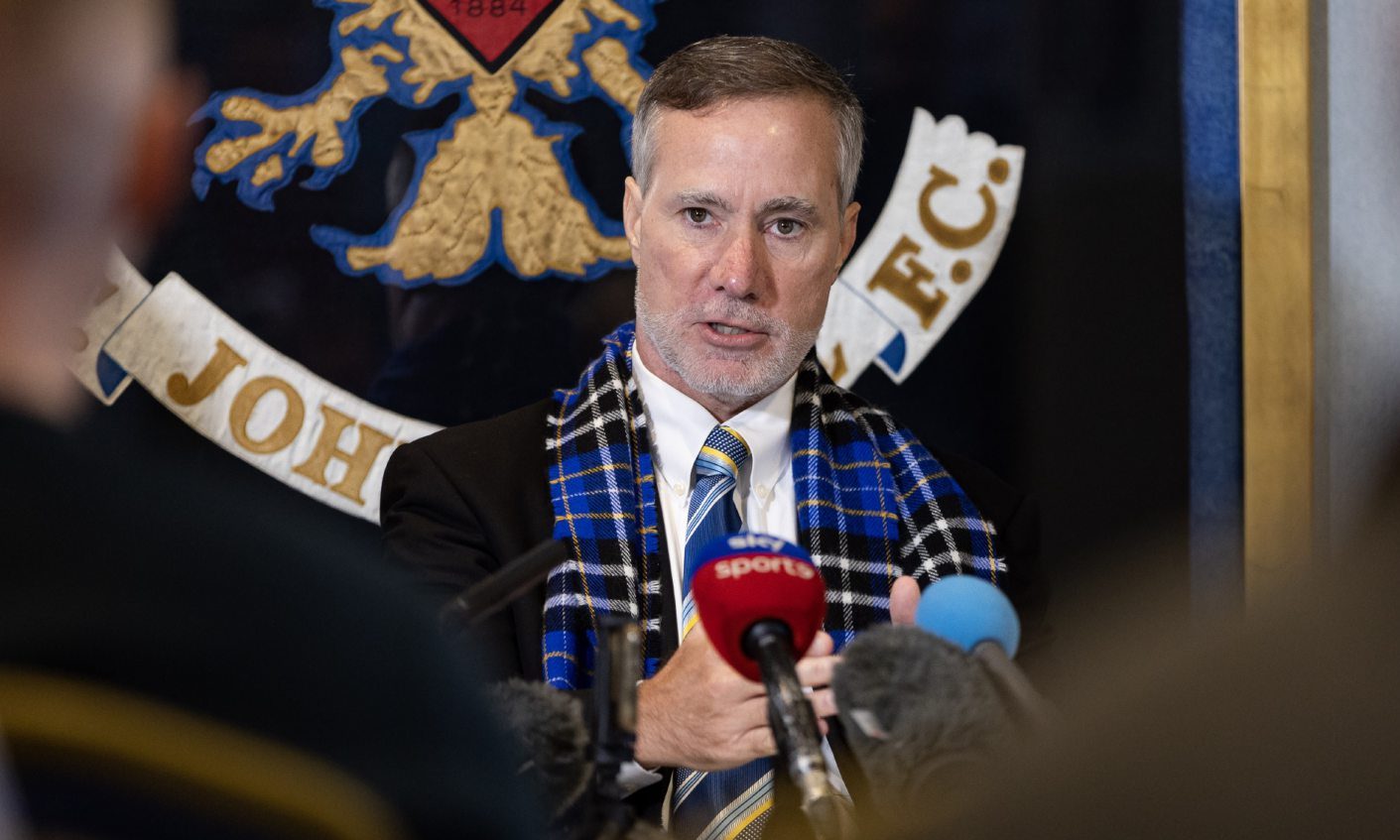
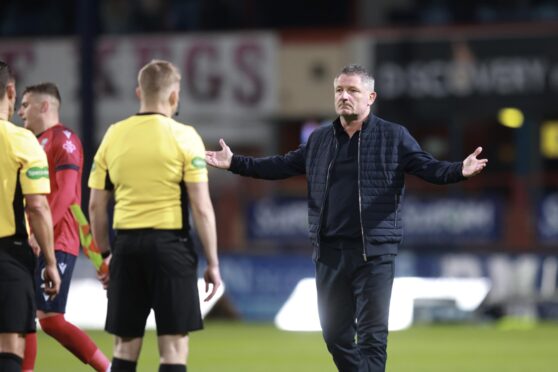
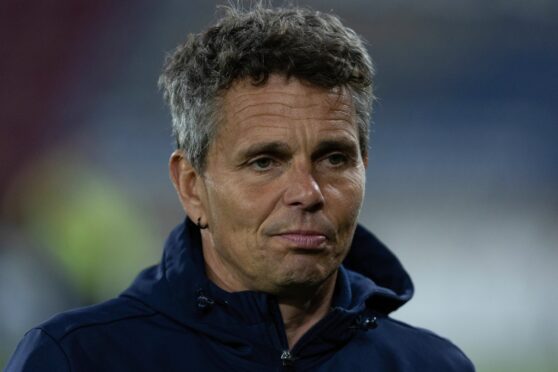
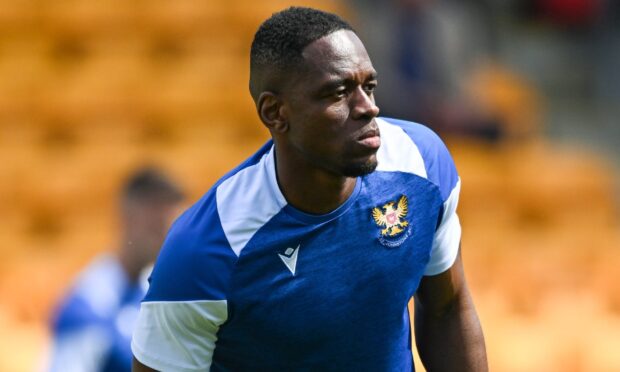
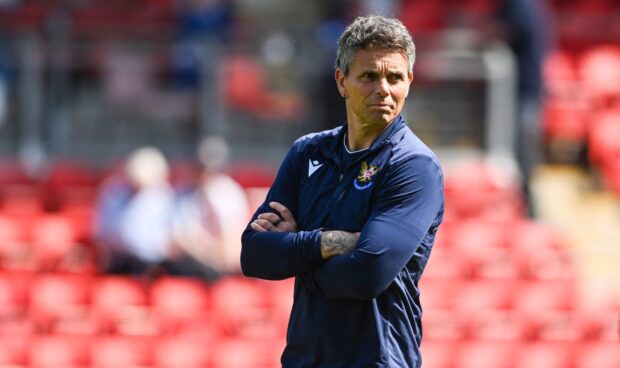
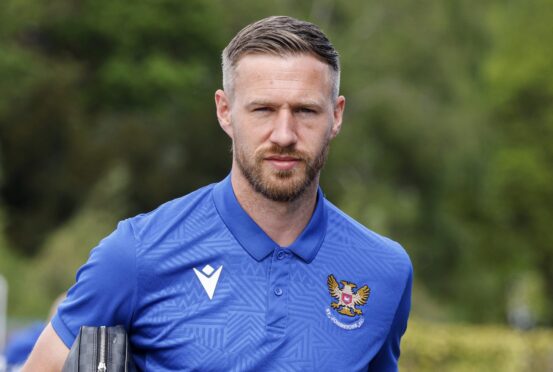
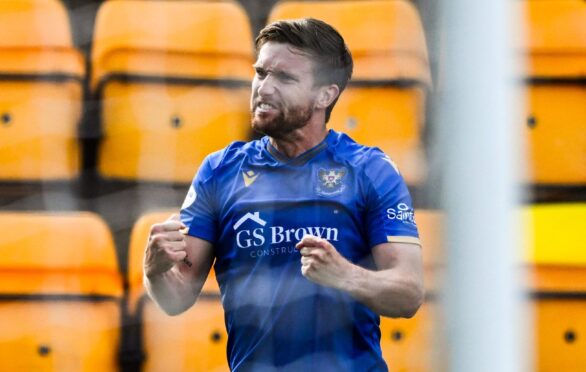
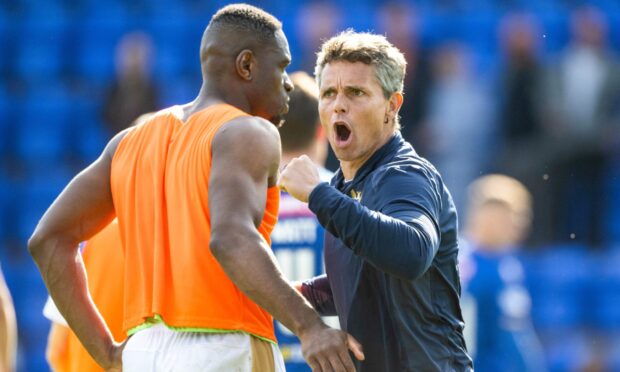
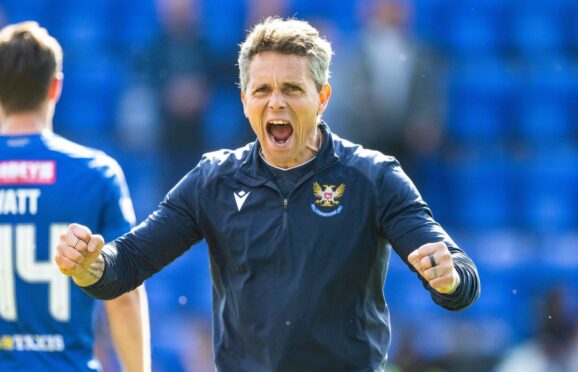
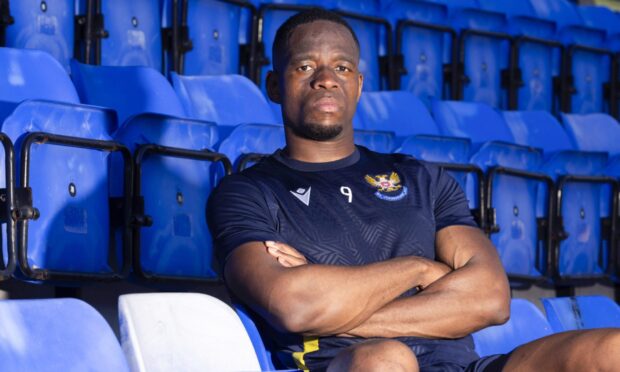
Conversation